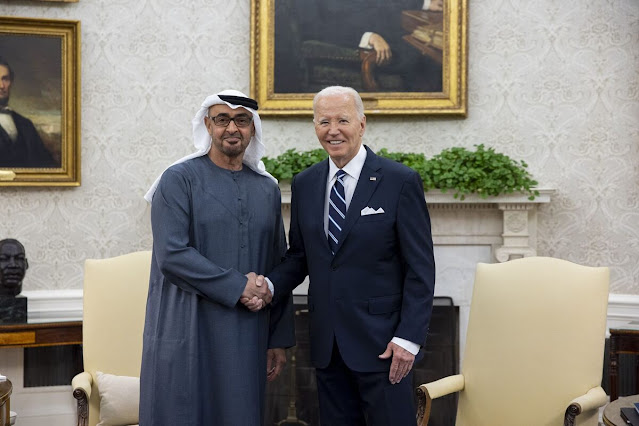Biden's $7 Billion Hydrogen Revolution: Clean Energy or Fossil Fuel Dependency?
Biden's $7 Billion Hydrogen Revolution: Clean Energy or Fossil Fuel Dependency?
Unlocking the Power of Hydrogen: Jobs, Environmental Impact, and Public Debate
In a bold move to rein in climate change, President Joe Biden recently pledged an astounding $7 billion for the development of regional hydrogen hubs across the United States. Seven regions, stretching from Pennsylvania to the sunny shores of California, are set to share this substantial investment, aiming to spearhead a fundamental shift toward hydrogen as a sustainable alternative to traditional fossil fuels. As the news broke during Biden's visit to the Tioga Marine Terminal in Philadelphia, the implications of this endeavor are monumental.
The Hydrogen Pitch: A Catalyst for Jobs and Emission Cuts
Biden has positioned hydrogen as the transformative solution for job creation and a significant reduction in carbon dioxide pollution. The hydrogen hubs project is about collaboration, transcending state lines, industries, and political divisions to fortify the nation's economy and rebuild communities. The driving force behind this initiative is the prospect of thousands of new job opportunities and a profound environmental impact.
Energy Revolution Unveiled
Energy Secretary Jennifer Granholm declared the announcement as the "dawn of a new manufacturing sector in the United States." Hydrogen, a versatile and highly combustible molecule, predominantly derived from natural gas, is at the forefront of this energy transformation. However, it can also be produced from water, using electricity, potentially resulting in minimal carbon emissions. The promise of fast-tracking commercial-scale "clean hydrogen" production is a notable objective of this endeavor.
Charting the Hydrogen Hubs: Geographical Landscape
The U.S. Department of Energy meticulously selected these hubs, involving a total of 17 states, through a highly competitive process that commenced with 79 applications. These hubs are strategically located in regions such as California, the Gulf Coast of Texas, the Ohio River Valley, the Midwest (encompassing Illinois, Indiana, and Michigan), and an area encompassing North and South Dakota along with Minnesota. The critical funding for this ambitious project stems from the Bipartisan Infrastructure Law of 2021.
Unique Hubs for a Unique Nation
One remarkable aspect of the plan is the establishment of specialized hubs to capitalize on each region's unique attributes. For example, the Mid-Atlantic Clean Hydrogen hub, dubbed MACH2, will receive $750 million for the utilization of legacy fossil fuel infrastructure. This includes repurposing pipelines, oil refineries, and port facilities. One particular project within MACH2 will involve the Philadelphia Gas Works, the largest municipal-owned utility in the nation, generating hydrogen to power trucks at the Port of Philadelphia, potentially creating 20,000 jobs.
Breaking Boundaries: The Appalachian Regional Clean Hydrogen Hub (ARCH2)
Another notable hub, the Appalachian Regional Clean Hydrogen Hub (ARCH2), is set to receive up to $925 million in federal funding. The hub will encompass projects in West Virginia, Pennsylvania, Ohio, and Kentucky. With the backing of West Virginia Senators Joe Manchin and Shelley Moore Capito, ARCH2 aims to generate up to 18,000 construction jobs and 3,000 permanent positions once it reaches its full potential.
Pacific Northwest's Green Promise
The Pacific Northwest, including Washington, Oregon, and Montana, is set to receive up to $1 billion to create a hydrogen hub focused on producing hydrogen fuel through electrolysis. This environmentally friendly process, which splits hydrogen from water using abundant renewable power, results in the greenest form of hydrogen, with only oxygen as a byproduct. Supporters anticipate this hub will generate over 10,000 jobs and displace 220,000 gas-powered cars annually.
California's Leading Role
California, a trailblazer in the transition to clean energy, will receive over $1 billion to develop and deploy clean renewable hydrogen. One primary goal is to power the state's bustling ports with carbon-free hydrogen, a move estimated to reduce two million metric tons of carbon emissions. California Governor Gavin Newsom envisions the creation of hundreds of thousands of new jobs, emphasizing its potential to boost manufacturing and clean energy employment. However, concerns about the inclusivity of the process have been raised by California's environmental justice groups.
The Northeast Hydrogen Hub: An Unfulfilled Vision
Not every proposal secured federal funding, exemplified by the Northeast Hydrogen Hub. This ambitious $3.62 billion proposal, supported by New York, New Jersey, Massachusetts, Maine, Rhode Island, Connecticut, and Vermont, aimed to build over a dozen projects in the region to help produce hydrogen. While states in the region expressed disappointment, their determination to continue exploring hydrogen as a viable energy source remains unwavering.
The National Shift Towards Carbon Neutrality
Biden's push for hydrogen aligns with the national goal of achieving net-zero carbon emissions by 2050. This ambitious objective envisions balancing the amount of carbon dioxide entering the atmosphere by offsetting it with the removal of emissions over time. To achieve this, coal and oil must be gradually replaced with cleaner energy sources. Hydrogen, when burned as fuel or utilized in fuel cell vehicles, emits only water, rendering it an environmentally friendly option. However, the extent to which hydrogen production aligns with this goal depends on the source of energy used.
The Gray and Green Hydrogen Dilemma
Hydrogen production methods significantly impact its environmental credentials. Hydrogen derived from natural gas is referred to as "gray hydrogen," while utilizing renewable energy sources like wind and solar to produce hydrogen results in "green hydrogen." The White House has committed around two-thirds of the $7 billion investment towards developing green hydrogen. This involves harnessing solar and wind energy to produce hydrogen in the cleanest way possible.
The Road Ahead: Promotion and Public Perception
As the President and his top officials travel the nation to promote their work on climate, infrastructure, and manufacturing, the approach to the 2024 presidential election becomes increasingly prominent. However, recent polls suggest that the public remains cautious about fully crediting the President for these investments, with some raising concerns about natural gas still being the primary fuel source



Comments
Post a Comment